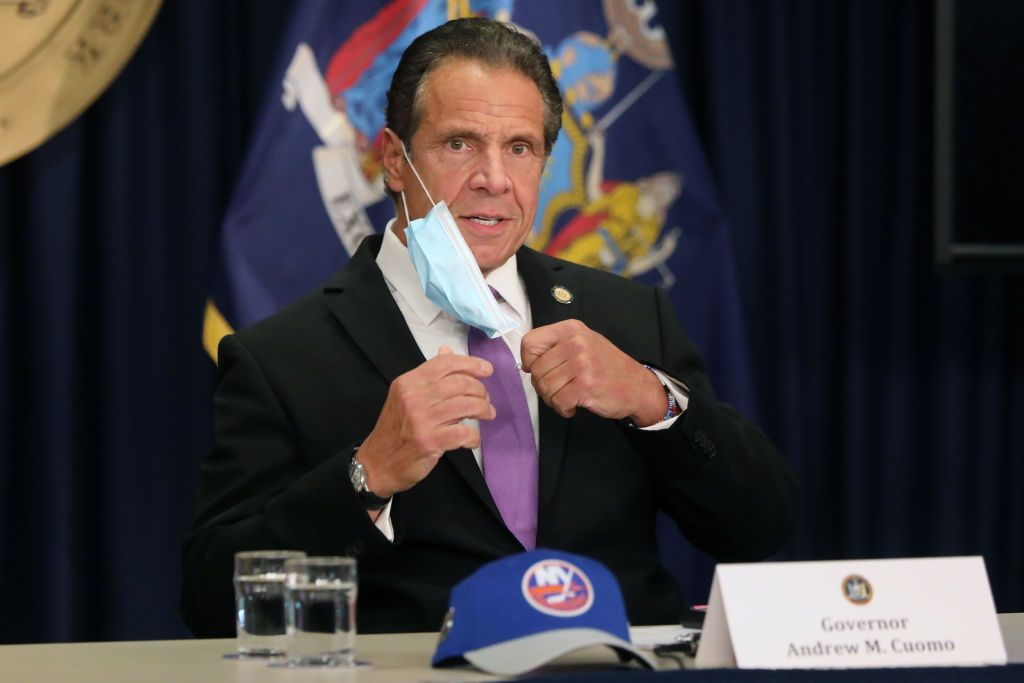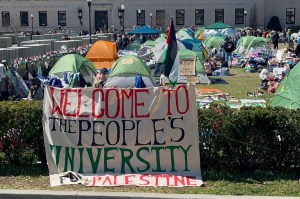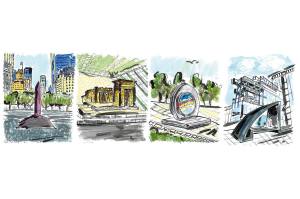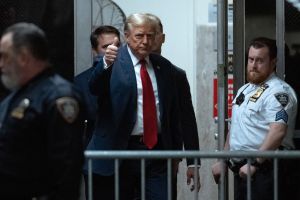‘I normally don’t turn off my cellphone when I sleep,’ writes Andrew Cuomo in his new book American Crisis: Leadership Lessons From the COVID-19 Pandemic, ‘because the work of being governor is literally 24 hours a day, and the phone pings all night long.’ Wait a minute. Is he joking? If Cuomo is so busy, how on Earth has he found the time to write a book in a matter of months? I can’t find the time to write a book. How in Hell can he? A few pages later, Cuomo is at it again:‘I don’t have what you call a balanced life either. I work all the time. Enjoyment for me is when I’m with my daughters or my family, and in the summer I spend time on the water with my brother and friends, but usually I just work.’I suppose writing a book is a kind of work but not the kind of work the people of New York expect from him. If I told my boss that I was working night and day but turned out to be ‘working’ on an album of lo-fi acoustic songs, I doubt she would be happy.American Crisis comes in a diaristic format, so perhaps it could be argued that Cuomo has been compiling the book over the past year. But the scale of the historical revisionism within nullifies that theory. You might think it would be difficult to apply historical revisionism to events that took place seven months ago. Not a bit of it. About the first COVID-19 case in New York, he writes:‘Even with the announcement of the first case, New Yorkers had largely not yet reached a point of high anxiety. But I had.’Really? Cuomo spent the first weeks of March telling people not to be afraid and to go about their lives. Perhaps he was putting on a brave face — but if so, then it casts doubt on his repetitive boasts about transparency. ‘I don’t even filter the truth for my kids,’ he says.Cuomo spends a lot of time boasting, which would be forgivable in a memoir, perhaps, but seems a little sleazy in a book ostensibly about dealing with a pandemic. Two early pages list his legislative accomplishments. ‘I have nothing left to prove to anyone,’ he declares. He has nothing left to prove to anyone, which is why he has written a book about what a great job he has done.Cuomo is also a master of the incidental humble-brag. ‘A good hand sanitizer,’ he tells us, chattily:‘…not only cleans your hands but also leaves them feeling soft and smooth. My hands have never been soft and smooth. I was interested only in the virus-killing capacity of hand sanitizer.’He’s a man of action, you see. A macho manly man. He was born with calloused hands.This bragging is elevated to the realms of farce when Cuomo declares, ‘Many people don’t know that I’m funny. But I am. Actually, I am very funny.’ We’ll be the judge of that, thanks very much. You don’t get to walk up to a woman and declare, ‘Actually, I am very handsome.’As the pandemic progresses, the book gets more interesting. Cuomo is not without virtue as an author or politician. He recounts some good decisions that he made, like issuing a moratorium on the evictions of New Yorkers who had lost their jobs because of the pandemic. For all his hatred of the Trump administration, he admits to being ‘pleasantly surprised’ when Mike Pence intervened with the FDA over testing. I cannot disagree with Cuomo’s frustration over the President’s mixed messages and politicking. Had Cuomo been more self-aware, he could have recognized similarities between himself and Trump. Certainly, Cuomo is a more polite and cultured man. Still, both are terribly keen on talking about themselves. Both are sensitive to criticism — though Cuomo, ever keen to flaunt his masculine credentials, insists that insults only hurt him when aimed at his brother and mean tweets only give him grief when they hurt his kids. You find more irritation than substance when Cuomo tries to address criticism over the New York State order which mandated that nursing homes could not turn away old people on the basis that they suffered from COVID-19. Nothing but an ‘orchestrated strategy’ by ‘Republicans’ according to Cuomo. ‘Critics misstate the law and policy,’ he says:‘No law or policy would have ever required a nursing home to take any COVID-positive person. The policy was that nursing homes couldn’t discriminate, not that they had to accept. That makes all the difference in the world.’Does it make all the difference in the world? The homes had a choice between accepting COVID-positive patients and accepting nobody at all. That made all the difference in the world? To be clear, I am not suggesting that this order was the only reason why coronavirus devastated nursing homes in New York and elsewhere. Plenty of the damage was done by infected carers who, with the best intentions, spread it to patients. But Cuomo’s almost allergic response to introspection is embarrassing in a book that speaks at such exhausting lengths about leadership and responsibility.
[special_offer]
Cuomo’s leadership skills escape him elsewhere when he might have to say or do something unfashionable. Writing about Black Lives Matter marches, he comments: ‘the protests presented new complications in the time of COVID, because they were massive gatherings. Thankfully, they were held outdoors and most protesters wore masks’. Several pages later, he is horrified by ‘scenes from across New York of large congregations in front of bars, in parks, and on street corners’. Was it OK to congregate outside or was it not? The spike in crime, including murders, which followed the protests is mentioned only in passing, almost as if it is a change in the winds.If there could be one good reason for writing this book so quickly, it is offering advice for the ‘second wave’ that many countries are experiencing. Cuomo adds a ‘Blueprint for Going Forwards’ to the book. Some of its advice is sound. It is true that ‘reliance on China and other countries to supply us on a moment’s notice with vital equipment is a national security risk’. Cuomo is smart to emphasize the virtues of good ventilation. Some of his practical reflections on increasing hospital capacity could be useful. But there are fewer thoughts on how to balance the harms of the virus with the economic, psychological and political harms of restrictions. Perhaps Cuomo has reached no firm conclusions on this. That would be understandable. But given that he has, in his own words, ‘19.5 million people counting’ on him, he should perhaps have been thinking about that rather than writing pages about how ‘the Godfather movies and The Sopranos all reinforce the stereotype of the Italian as the criminal and the thug.’


















